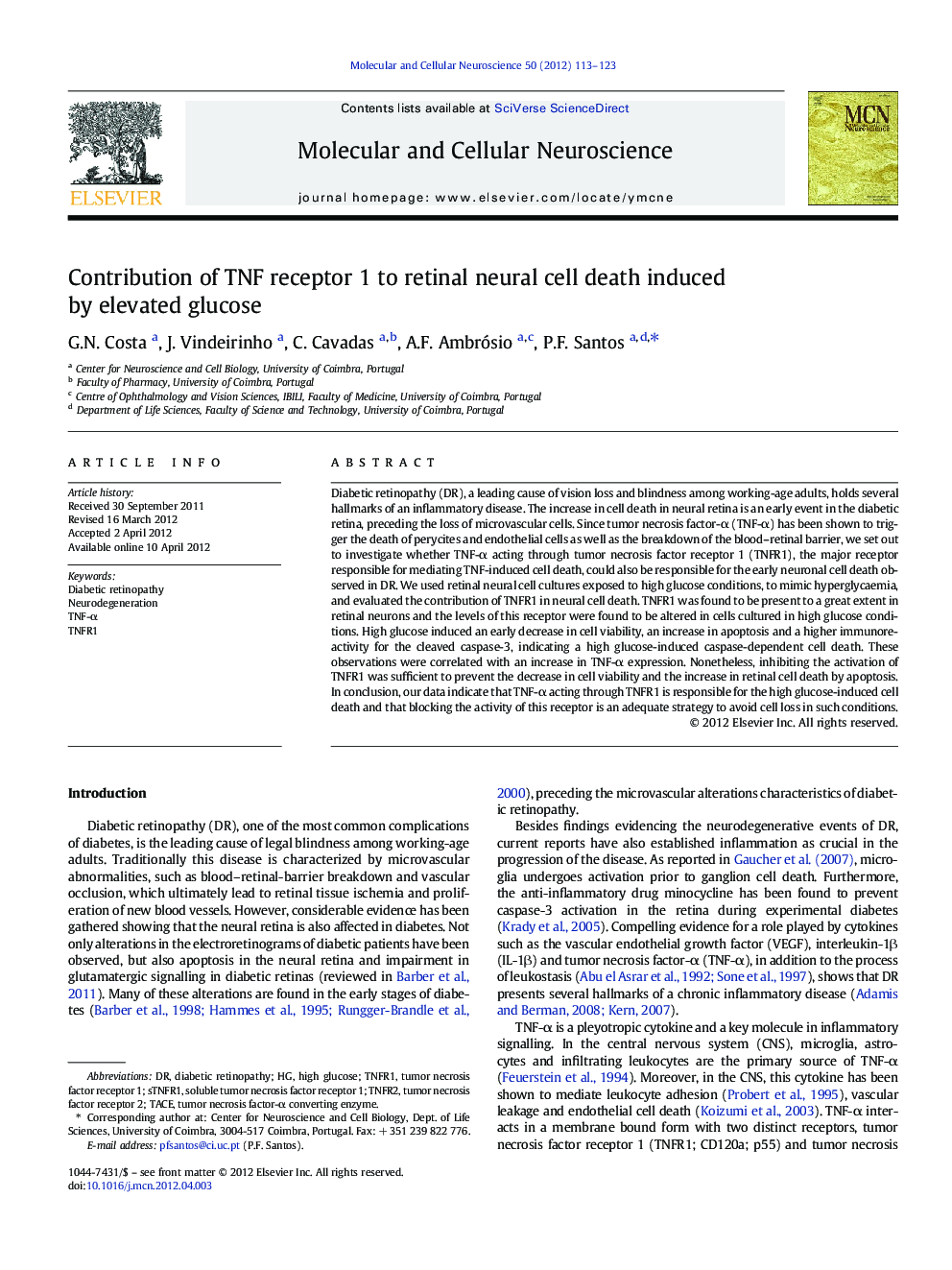| Article ID | Journal | Published Year | Pages | File Type |
|---|---|---|---|---|
| 2198606 | Molecular and Cellular Neuroscience | 2012 | 11 Pages |
Diabetic retinopathy (DR), a leading cause of vision loss and blindness among working-age adults, holds several hallmarks of an inflammatory disease. The increase in cell death in neural retina is an early event in the diabetic retina, preceding the loss of microvascular cells. Since tumor necrosis factor-α (TNF-α) has been shown to trigger the death of perycites and endothelial cells as well as the breakdown of the blood–retinal barrier, we set out to investigate whether TNF-α acting through tumor necrosis factor receptor 1 (TNFR1), the major receptor responsible for mediating TNF-induced cell death, could also be responsible for the early neuronal cell death observed in DR. We used retinal neural cell cultures exposed to high glucose conditions, to mimic hyperglycaemia, and evaluated the contribution of TNFR1 in neural cell death. TNFR1 was found to be present to a great extent in retinal neurons and the levels of this receptor were found to be altered in cells cultured in high glucose conditions. High glucose induced an early decrease in cell viability, an increase in apoptosis and a higher immunoreactivity for the cleaved caspase-3, indicating a high glucose-induced caspase-dependent cell death. These observations were correlated with an increase in TNF-α expression. Nonetheless, inhibiting the activation of TNFR1 was sufficient to prevent the decrease in cell viability and the increase in retinal cell death by apoptosis. In conclusion, our data indicate that TNF-α acting through TNFR1 is responsible for the high glucose-induced cell death and that blocking the activity of this receptor is an adequate strategy to avoid cell loss in such conditions.
